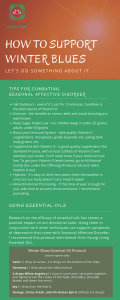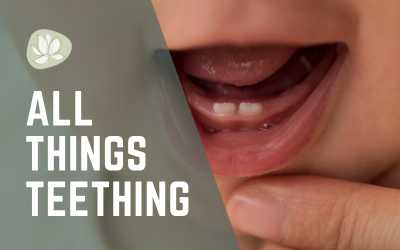If you think Seasonal Affective Disorder is hitting you this winter, I’ve got 6 tips to turn it around.
If you’ve noticed you struggle with sadness every winter, you’re not alone. Many people are affected physically and emotionally by the change in weather. In this video, I’ll go over several things to consider making your winter months healthy and bright, even if you don’t think you have Seasonal Affective Disorder.
Click the image below to print this helpful card with my tips for combating SAD. There’s an essential oil protocol on the bottom!
Seasonal Affective Disorder, otherwise known as SAD, seems to affect a whole lot of people in the winter months. It tends to be more common in the North than it is in the South because you don’t see the sun much up there. But we do down here.
It can go misdiagnosed as a lot of other things because we don’t realize that it’s a change in the time, weather, and sunlight. It can mean a change in exercise. We also tend to eat more sugars, because we have all these sugar holidays.
We don’t necessarily realize how the combination of all of those can then affect our moods. So we find ourselves depressed, sluggish. There’s a scale to consider as well, from minor to dangerous.
What are some things that you can do to acknowledge this time of year can be tough for some, even yourself?
My Five Tips
Number one, make a mental note of where we are with your sugars. Always keep your sugars low. Twenty-five grams if you’re a kid, fifty grams, or less if you’re an adult. That includes all your fruits.
Second, exercise. It gets cold. We don’t necessarily feel like getting out and exercising. Yet, we know statistically that when we exercise regularly, our moods are better.
Third, there are some other nutritional things that you can do. A lack of Vitamin D has long been linked to seasonal affective disorder. Knowing our levels, making sure we’re taking a quality product, and making sure you up how much you’re taking are all crucial. Research says that 2,000 IUs isn’t enough to keep your level stable. 5,000 IUs are needed per day to keep your levels at the number that they are.
But here’s the thing: if the weather’s changing and that’s affecting your mood, your vitamin D levels aren’t where they should be. If you get your bloodwork tested for Vitamin D levels, you need to be up in the 60 to 70 range. That leaves you much healthier in terms of viral infections, which tend to be very prevalent in the wintertime.
Fourth, boost your immune system. Did you know undiagnosed viral infections, or what we call latent viral infections, can also lead to depression? Making sure your Vitamin D levels are good will also help boost your immune system.
Fifth, drink plenty of water. Just because it’s not hot out doesn’t mean you can cut back on drinking water.
One More Tip
And finally, make sure that you’re truly addressing any pain that comes with the holidays. Maybe it’s not what you want it to be. Maybe you have to see people you don’t like to see. Maybe you have expectations of yourself and other people that need to be released. Maybe you have expectations that should be met, and it’s time to make some changes because they’re consistently not being met.
Understand this is a journey. This life is up and down and great and crazy. But if we’re consistently (and with rhythm) falling into chaos all the winter long, it may be time to consider if Seasonal Affective Disorder burdens you. If you need to, reach out. We’d love to help you out with this.
To test your Vitamin D levels, follow this link to purchase the at-home test.





Recent Comments